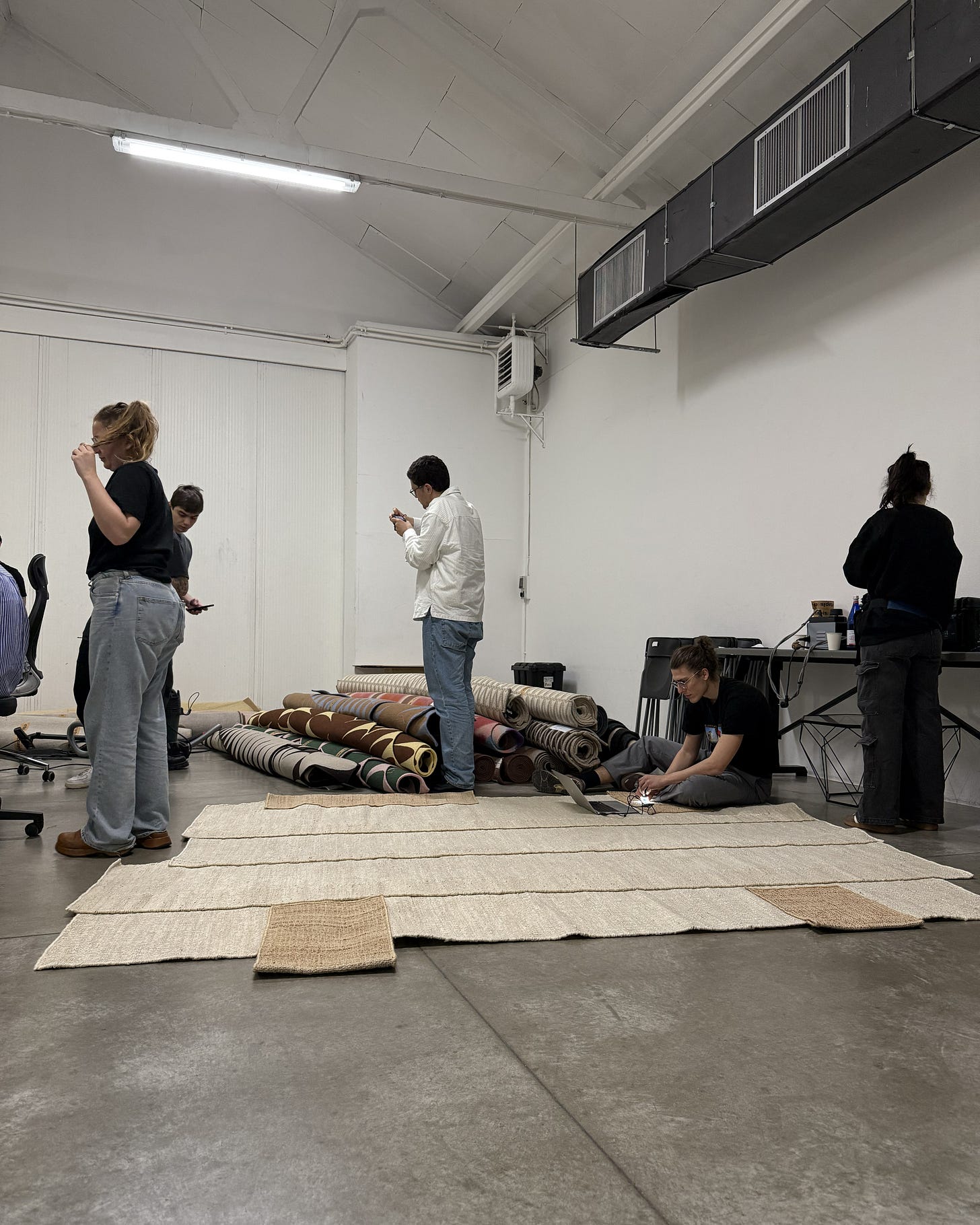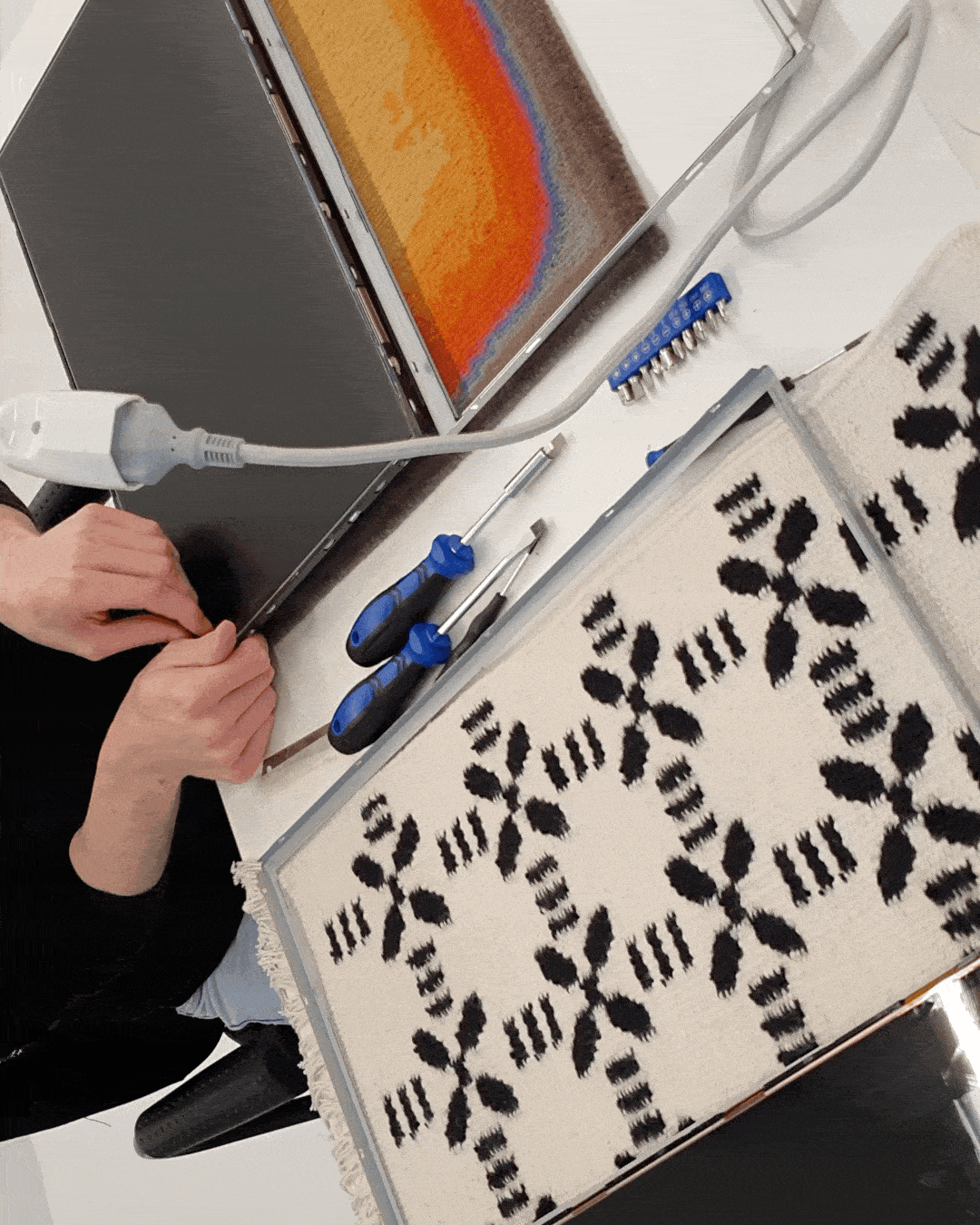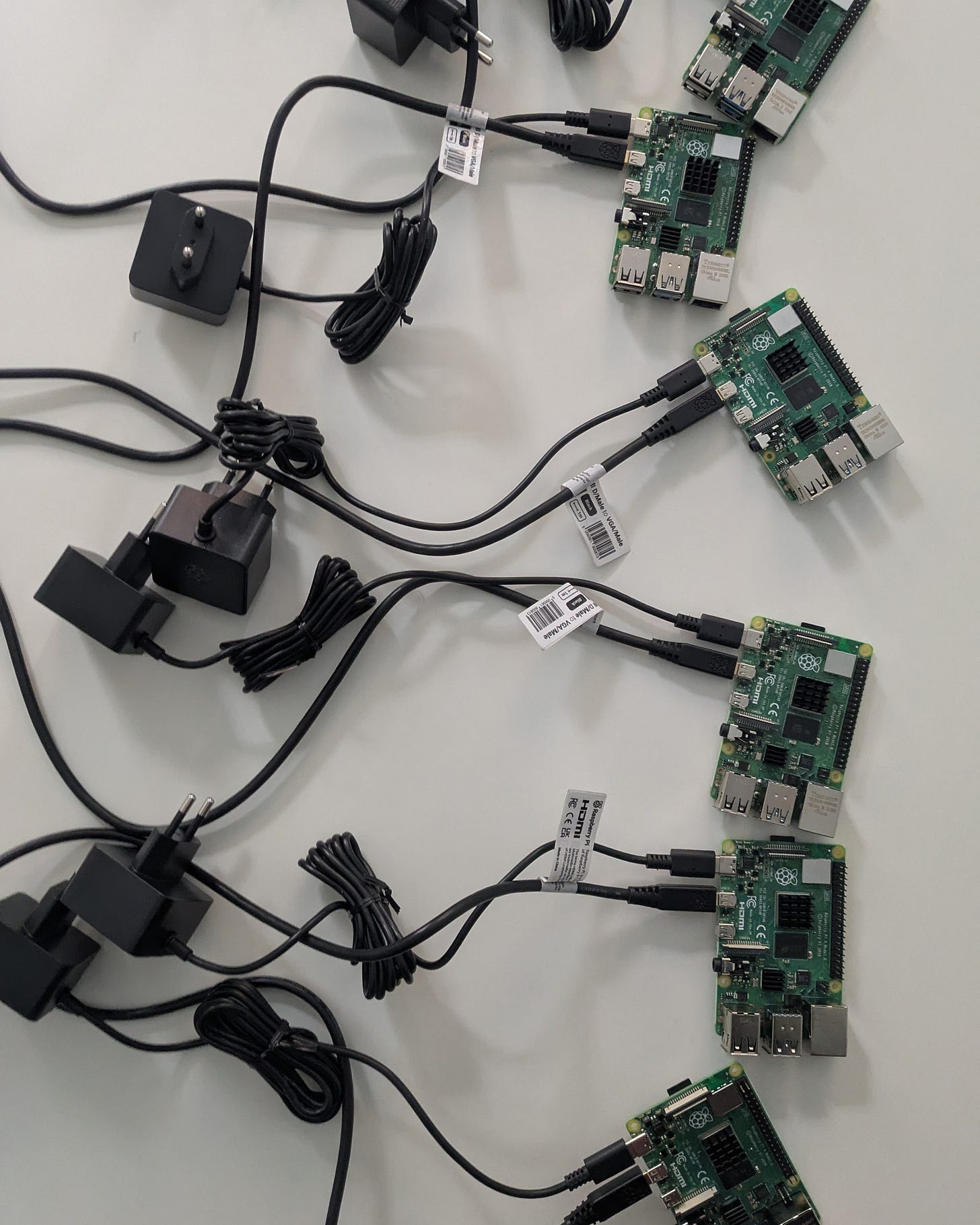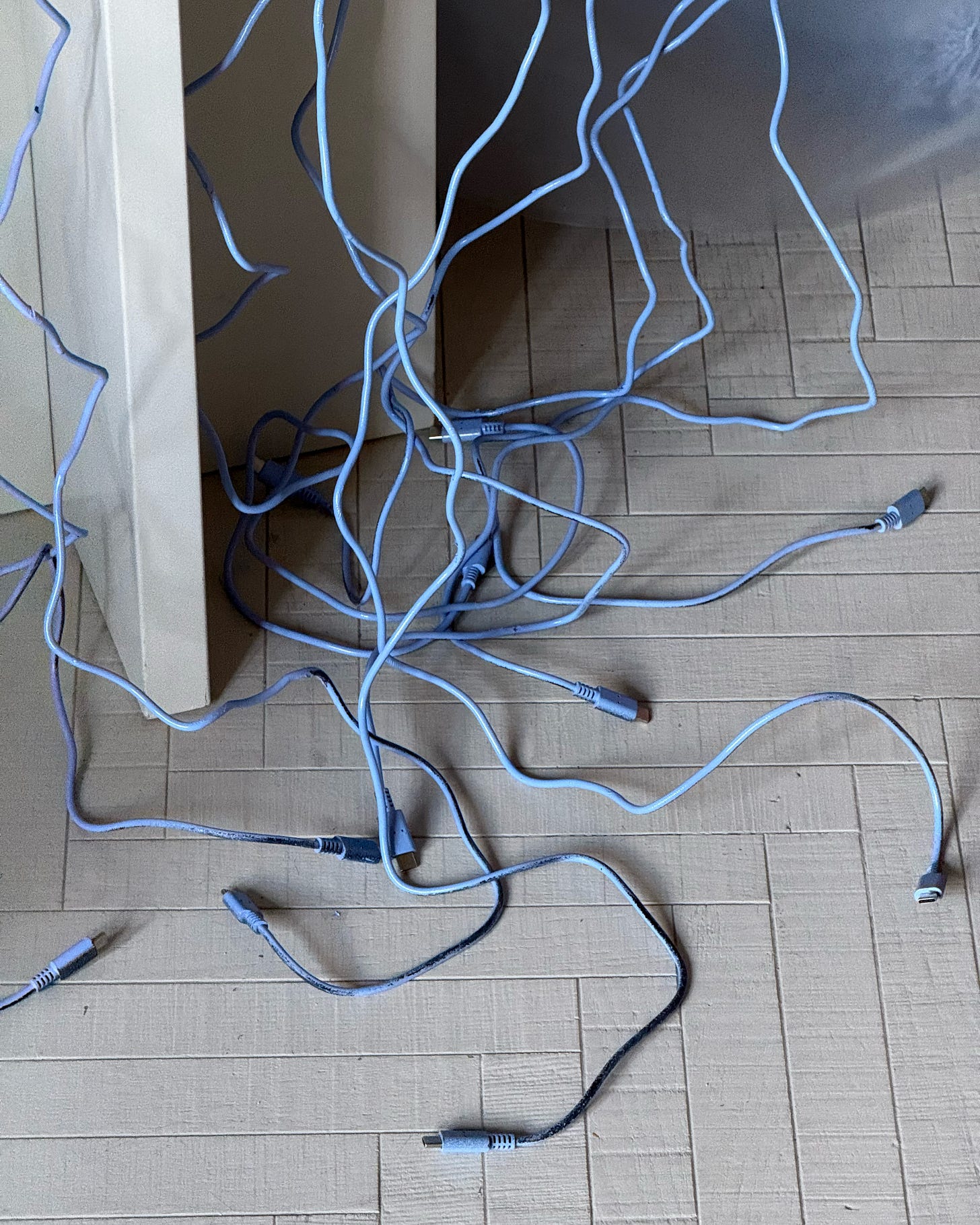#11 – Ways of Seeing
Can technology be an extension of craftmanship? Or how we designed the exhibition for cc-tapis at Milano Design Week 2025
During Milan Design Week 2025 cc-tapis presented Ways of Seeing, a collective exhibition curated by Giga. At the core of the exhibition lies the intention to highlight how craftmanship frequently intersects with and can be enhanced by technology in interesting and unexpected ways, by shedding a light on processes that go often unnoticed in a world saturated with visual stimuli.

The exhibition
An installation of works from 11 designer and artists – each design stemming from the expression of an idea formed used a different rug-making technique and paired with a seemingly blank monitor suspended next to it.
At the entrance of the space the visitors are handed a peculiar device, a viewing screen – an item capable of bridging the gap between analogue and digital. Only by looking through the device can one really see what’s actually going on the monitors and the image be revealed.
The concept
The concept behind Ways of Seeing, starting from its name, directly references the 1972 BBC television series of 30-minute films created by writer John Berger, that aims to present new perspectives on how to view art by challenging the traditional Western artistic and cultural canon. Berger showed how images aren’t neutral – they’re shaped by context, power and ideology.
This concept serves as a narrative tool to introduce a discourse on the dichotomy between digital and analogue. How can the inner workings of technology manifest and be experienced in a more intimate and hands-on approach?

The Visual Identity
The visual system for the exhibition carries over from the visual codes defined in the company’s website design and is reinterpreted as a language that homages and celebrate technology and its visual history. You can read about it in the article #9 – A making of cc-tapis.
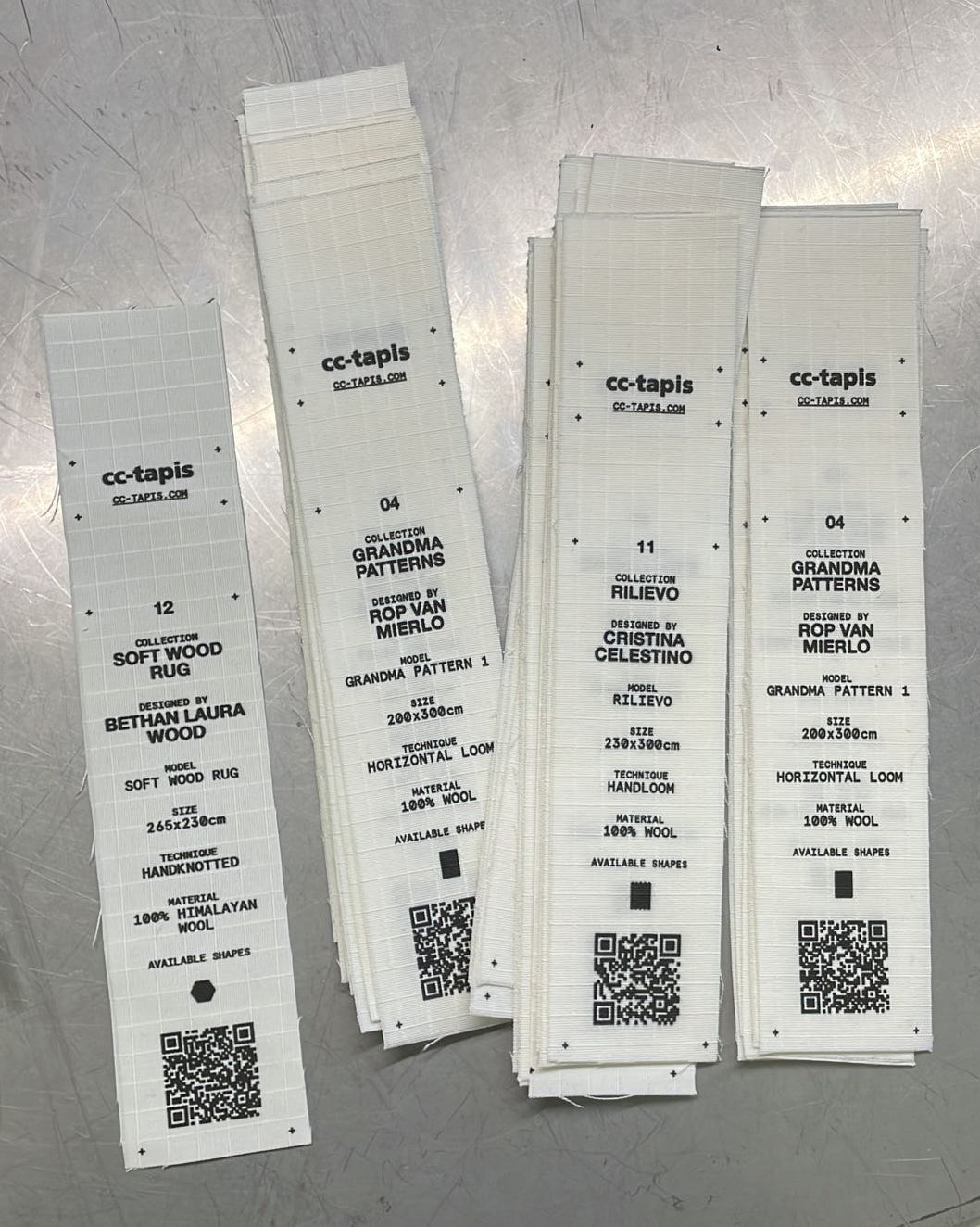
The empty monitors
In the incredibly hectic time that is the Design Week, where overconsumption of images can be often overwhelming, our take on exhibiting cc-tapis’ rugs invites the visitor to stop for a while and take a moment to really observe the designs from an in-depth perspective and delve into the crafting processes and materials. The screens in fact feature videos and images that document the rugs being crafted by the artisans, as well as behind-the-scenes studio materials from the designers themselves.
Moreover, essential to the narration of this part are video footage shot at a microscopic scale that create surreal visual landscape and, most importantly, contribute to “unveil what’s hidden” by bringing the textural and material qualities of the rugs’ threads to the forefront. These very visually different materials are stitched together in such a way that creates consistency within the cut itself, held by the visual system set in place.
The magic behind it
Traditional LCD screens work subtractively, shading a uniform source of light through the orientation of liquid crystals.
An LCD panel is made of 3 main elements (going outwards):
A backlight, which emits a uniform diffused white light.
A liquid crystals panel: for each pixel, the crystals “shade” the backlight differently to output different colors (or black).
A polarizing filter.
The polarizing filter is the outer layer and it “locks” the orientation of the light waves, making sure they are aligned with the liquid crystals. This step is essential in ensuring the crystals work properly; without it the light can “escape” freely in different directions and the screen looks almost completely white.
Preparation
Steps:
Disassembly: strip it of all non-essential parts (stand, chassis, etc)
Cleanup.
Securing the power group to the back of the screen (trough tape).
Removing the outer frame.
The polarizing filter: the most effective way for us was to use razor blades.
Re-applying the outer frame.
Cleaning again.
The setup
To play videos on the screens we needed more things:
Power
A video signal
We wanted each screen to be autonomous and to limit the amount of cables. Each display was encased in a composite object that would receive power from a single cable and power up both a screen and a video player.
Each Raspberry Pi was programmed so that, once powered, the correct video would be played in loop. Additionally, a Python script would also be launched at the same time to listen from a shutdown command sent from a Telegram bot. This allowed us to power off all the Raspberries from a smartphone, without connecting a mouse and keyboard to them.
Conclusion
The exhibition plays with the concepts of materiality both in physical as well as digital forms, and how they intersect in special ways. Materiality here is explored in depth by defining multiple ways of seeing an object beyond its physicality. In this context, the act of looking at a screen is also taken in consideration within the frame of stimulating a reflection on the medium itself.
Taking a screen apart, removing its polarizing layer, and placing it in the observer’s hands serves as a way of manifesting its physicality – the act of seeing is then transformed into a participatory experience. Moreover, seeing the exposed motherboard of the Raspberri Pi’s and the complex wiring, the rugs and the fabric samples, the rug-making films and the microscopic-scale footage all serve as an invitation to discover what goes beyond the immediately apparent. A challenge to the fleeting nature of glancing.
A text by Michele Sablone, designer, and Matteo Garagiola, technologist at Giga
Hope you enjoyed :)
If you want to learn more about upcoming projects from Giga you can also follow us on Instagram and check our website.



